Search the Special Collections and Archives Portal
Search Results
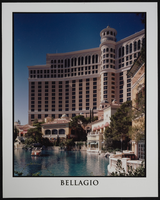
Exterior view of the Bellagio located in Las Vegas, Nevada: postcard
Date
Archival Collection
Description
Image
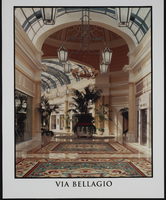
The shopping area in the Bellagio located in Las Vegas, Nevada: postcard
Date
Archival Collection
Description
Image

Exterior view of the Bellagio located in Las Vegas, Nevada: postcard
Date
Archival Collection
Description
Image
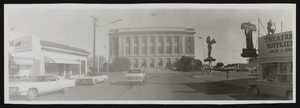
Clark County Courthouse in Las Vegas, Nevada: photographic print
Date
Archival Collection
Description
Image
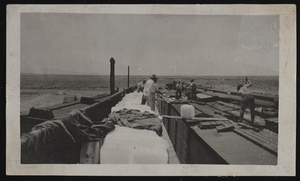
Loading ice on trains in Las Vegas, Nevada: photographic print
Date
Archival Collection
Description
Image
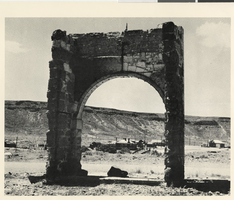
Photograph of ruins at Goldfield, Nevada, 1973
Date
Archival Collection
Description
Image
Anita Freeman Photograph Collection on Southern Nevada
Identifier
Abstract
The Anita Freeman Photograph Collection on Southern Nevada (1937-1972) primarily contains black-and-white negatives depicting locations in Southern Nevada, including the Hoover Dam, Lake Mead, and Mount Charleston. The collection also includes black-and-white negatives of the Helldorado Parade held in Las Vegas, Nevada, as well as landscapes in Arizona, such as the Grand Canyon.
Archival Collection
Bruce Turner Collection on Transportation and Water in Southern Nevada
Identifier
Abstract
The Bruce Turner Collection on Transportation and Water in Southern Nevada contains reports, publications, legal files, project proposals, journal articles, financial reports, photographs, and maps concerning transportation policy and water usage in Southern Nevada from 1980 to 2014. The collection contains documents from organizations including the Regional Transportation Commissions of Clark County and Southern Nevada, the Clark County Department of Air Quality and Environmental Management, Clark County Comprehensive Planning, the Urban Land Institute, the City of Las Vegas Neighborhood Services Department, the Southern Nevada Water Authority, and the Las Vegas Valley Water District.
Archival Collection
Annotated Bibliography for Biologic Overview for the Nevada Nuclear Waste Storage Investigations - Nevada Test Site, Nye County, Nevada, 1981 December
Level of Description
Archival Collection
Collection Name: Yucca Mountain Site Characterization Office Collection
Box/Folder: Box 46
Archival Component
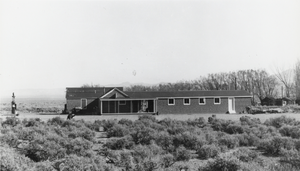
Carver's Station, Nevada: photographic print
Date
Archival Collection
Description
From the Nye County, Nevada Photograph Collection (PH-00221) -- Series V. Smoky Valley, Nevada and Round Mountain, Nevada -- Subseries V.A. Carver, Carver-Duhme, and Carver-Book Families (Smoky Valley). The facility was of modular construction. The Carvers purchased a building from Wallace Bird and moved it from Round Mountain to their ranch, where it served as the bar. Carver traded Bird hay for the building. Carver purchased another building in Monarch, located just south of Belmont. The building was moved to the Carver ranch by the Boni brothers, and it became the Carvers' living quarters. The dance hall was constructed in 1949 and is visible to the right of the porch. The Carvers tried to have dances on a regular basis, but holding them proved to be a lot of work.
Image
